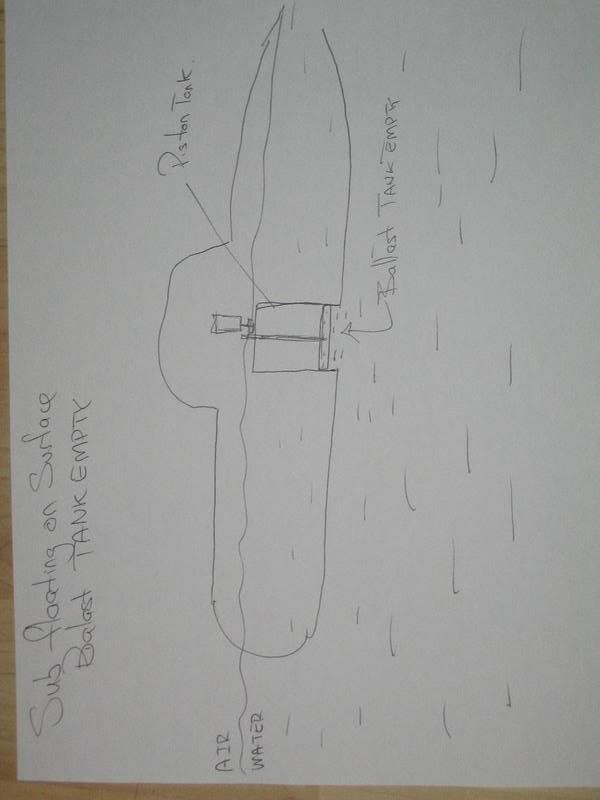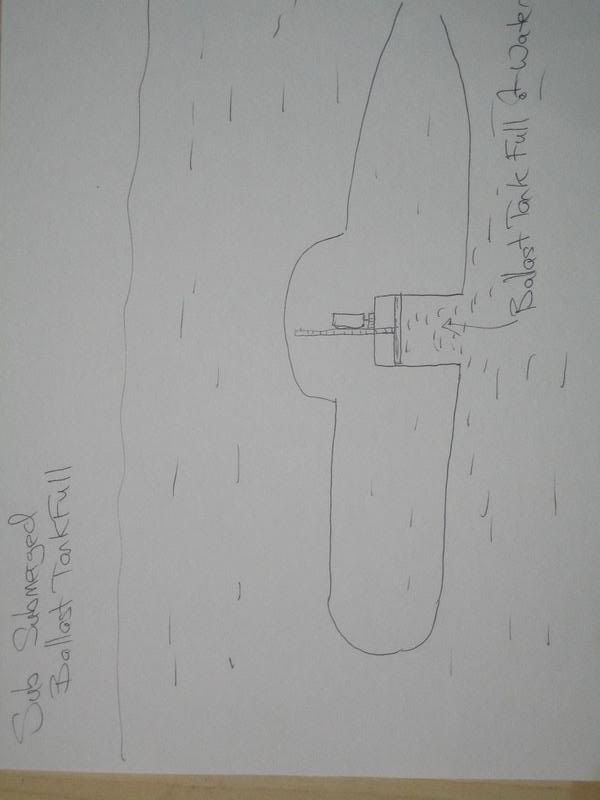Hi,
I will be scratch building a sub, which is not yet determined. I am still continuing my research before I get me feet wet...erm, so to speak.
I understand in order for a sub to float the weight of the sub must be less than to the weight of water for a volume it displaces.
1) But if it the sub is equal weight to the water does it simply float just below the surface of the water and if you have forward motion then you can control its axis of motion??
If the volume of the sub is heavier than water then it will of course sink and depending on the weight it will go to a specific depth (?)
I hope I got this right.
2) How can I figure how much weight is require to sink the sub to a specific depth while stationary?, and not go lower unless you steer it down while in motion
In my priminary plan so far is to have the sub go down to a specific depth of 1 feet with full tank being filled. The periscope will remain exposed over the surface of the water for air to excape and enter for sinking and rising.
3) Lets say we have a sub which has a 1 liter volume. The wieght less than 1kg of weight, the sub naturally floats, but how much for it to sink to "about" 1 feet? (hmm, I guess altiude is a factor here, so lets say sea lever for arguments sake) Is there a way to calculate this or is this very difficult?
I will be scratch building a sub, which is not yet determined. I am still continuing my research before I get me feet wet...erm, so to speak.
I understand in order for a sub to float the weight of the sub must be less than to the weight of water for a volume it displaces.
1) But if it the sub is equal weight to the water does it simply float just below the surface of the water and if you have forward motion then you can control its axis of motion??
If the volume of the sub is heavier than water then it will of course sink and depending on the weight it will go to a specific depth (?)
I hope I got this right.
2) How can I figure how much weight is require to sink the sub to a specific depth while stationary?, and not go lower unless you steer it down while in motion
In my priminary plan so far is to have the sub go down to a specific depth of 1 feet with full tank being filled. The periscope will remain exposed over the surface of the water for air to excape and enter for sinking and rising.
3) Lets say we have a sub which has a 1 liter volume. The wieght less than 1kg of weight, the sub naturally floats, but how much for it to sink to "about" 1 feet? (hmm, I guess altiude is a factor here, so lets say sea lever for arguments sake) Is there a way to calculate this or is this very difficult?


Comment